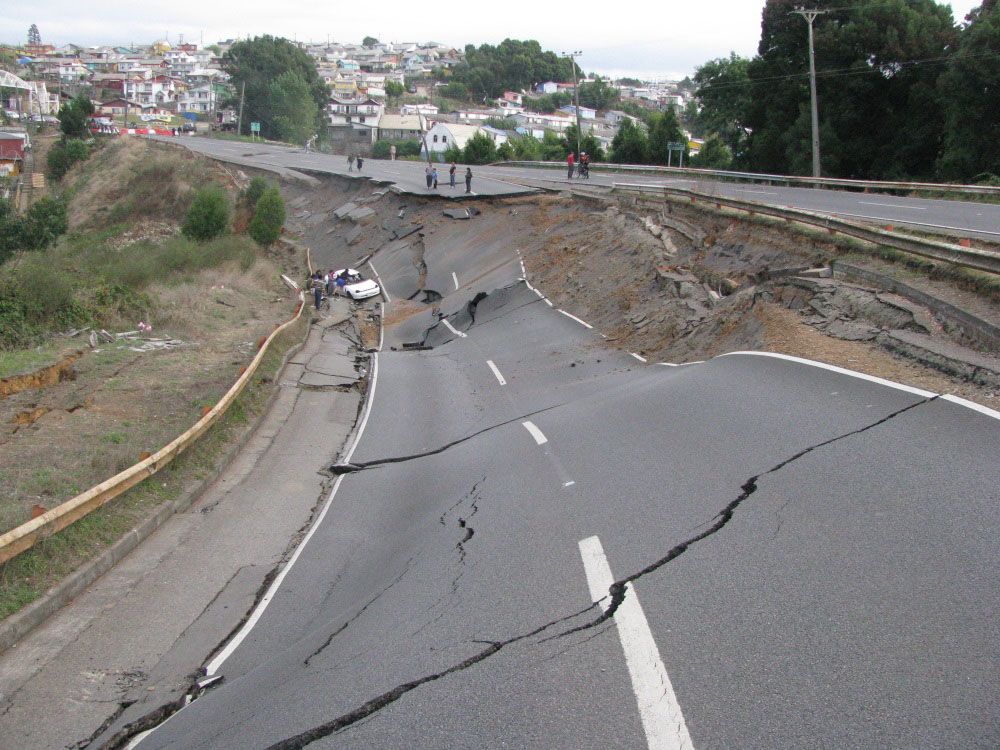Earthquakes are a significant natural hazard in the United States. Earthquakes are particularly impactful because a big earthquake could occur over a large geographic area and cause significant damage to structures. Other types of natural hazards, such as high wind, hail, tornadoes, hurricanes, snow, ice, flooding, volcanoes, tsunamis, abnormally high tides, landslides, and mudslides can also heavily impact communities in a negative way.
For public agencies and organizations that own large, valuable, and societally-important infrastructure systems, the question that should be asked is “what will happen after a natural disaster?” and “how will we respond to natural disasters?” “Lifeline” systems that provide drinking water, wastewater, electricity, natural gas, transportation, and telecommunications are all important to our modern society, and they are of particular importance after a natural disaster in order for communities to respond to and recover from these disasters. Not only is the real estate value of this infrastructure large, but our society relies so heavily on these systems that the economic damage caused by one of them not operating (or all of them not operating) would be enormous.
So, what tools exist to assist in post-disaster recovery?
The Applied Technology Council (ATC) developed ATC-20 Procedures for Post-earthquake Safety Evaluation of Buildings in 1989 and ATC-45 Safety Evaluation of Buildings after Wind Storms and Floods in 2005. These documents provide a standard framework with which building inspectors can evaluate the safety of a building after an earthquake, wind storm, or flood. Typically, these safety inspections are used to mark a building as unsafe, allow limited entry, or allow normal use of a facility. These documents’ greatest value to society is that they allow every building to be inspected for safety using a standard framework and they allow for inspection checklists to be completed quickly by building inspectors.
The Challenge for Lifeline Systems
One significant limitation of ATC-20 and ATC-45 is that they apply to buildings only. This means that agencies and organizations that own and operate structures that do not fit well into the “buildings” category, such as water treatment facilities, wastewater facilities, utility systems, industrial facilities, tanks, towers, piers, wharves, roadways, bridges, retaining walls, and other similar critical civil infrastructure, cannot effectively use these documents to evaluate the post-disaster safety of their facilities. For lifeline systems, there exists ASCE TCLEE Monograph No. 11 Guide to Post-Earthquake Investigation of Lifelines published in July of 1997. This document provides some guidance on how to evaluate lifeline systems after an earthquake, but it is in a different format and has a different intended use than ATC-20 and ATC-45. In addition, some state and local agencies have their own procedures for how to inspect specific types of infrastructure after certain types of natural disasters, such as the State of California OES Safety Assessment Program guidelines. Another shortfall is that ASCE TCLEE Monograph No. 11 has not been updated in 20 years, and applies to earthquakes only.
For lifeline infrastructure it is also important to be able to identify post-disaster serviceability and functionality. Many of the facilities owned by these “lifeline” organizations do not regularly house people, so, the risk to human life safety due to structural collapse is relatively small. However, the post‑disaster operability of these facilities is vitally important for emergency response, eventual disaster recovery, and the continued societal and economic vitality of the region. So, the ability to quickly evaluate a structure’s condition for safety and operability is very important.
The Solution
There is a current proposal from the ASCE Disaster Response and Recovery Committee to develop an all-hazards ANSI-accredited national standard for the post‑disaster evaluation of critical civil infrastructure. This new standard would build upon the framework of previous documents and provide a national standard for the assessment of post-disaster safety and serviceability of critical civil infrastructure, with a particular focus towards user-friendly field checklist assessments. This standard would empower local agencies responsible for the post‑disaster assessment of their infrastructure to effectively evaluate structures they own. This all-hazards document would be tailored to the specific types of structures that are part of these lifeline systems and would include needed checks to enhance the recovery and operability of these structures. This document is needed to close the gap between the post-disaster safety evaluation of buildings and the post-disaster safety and serviceability evaluation of civil infrastructure and lifeline systems.


